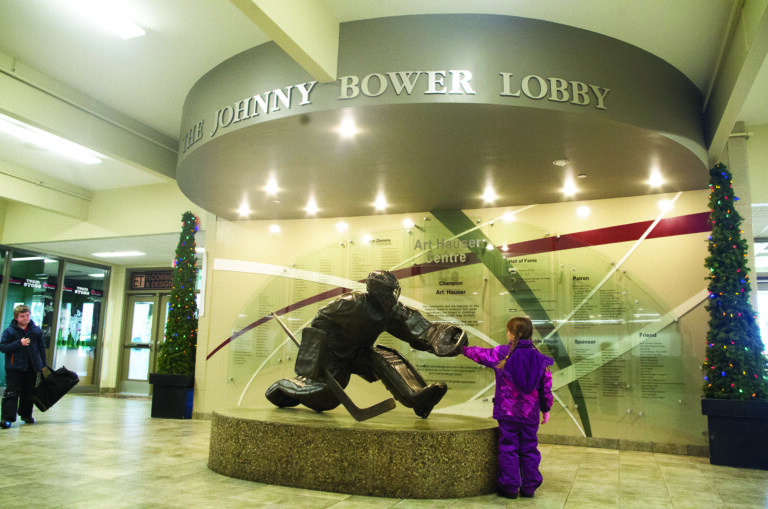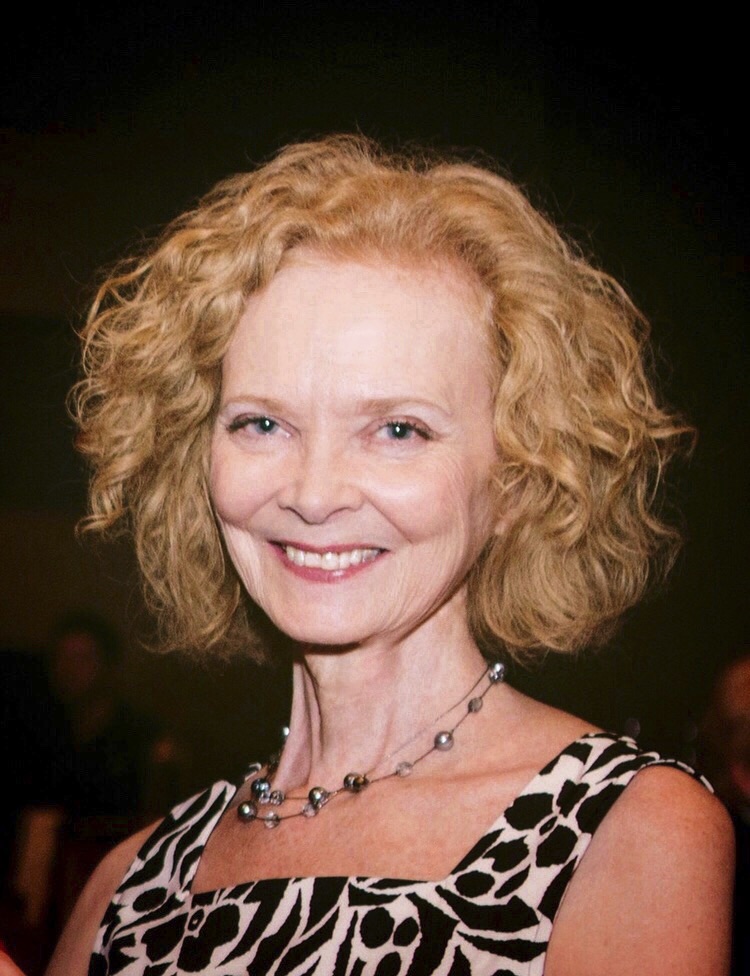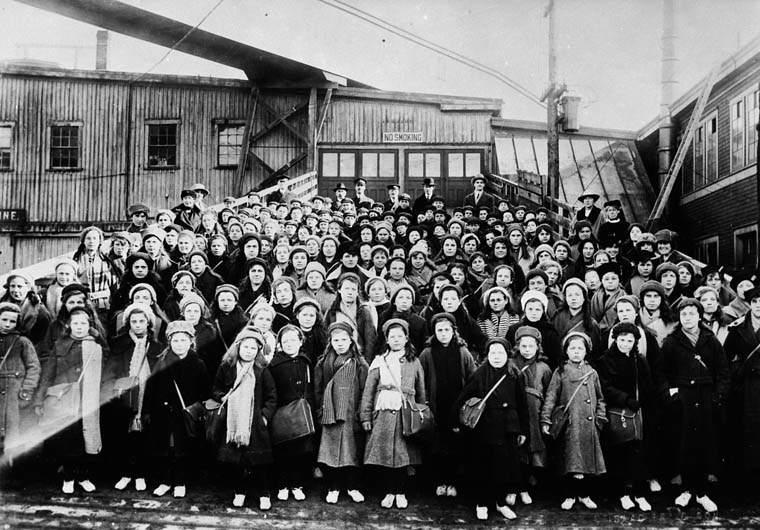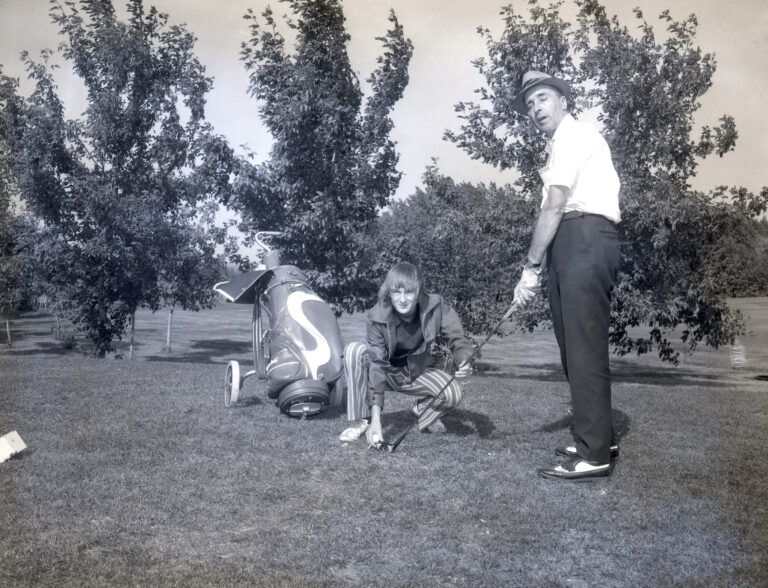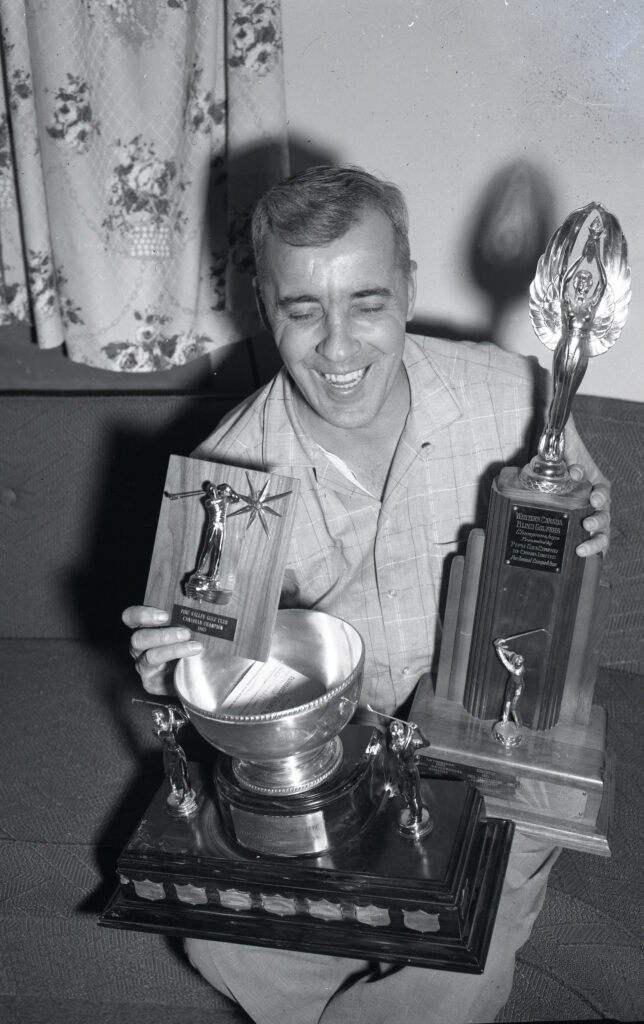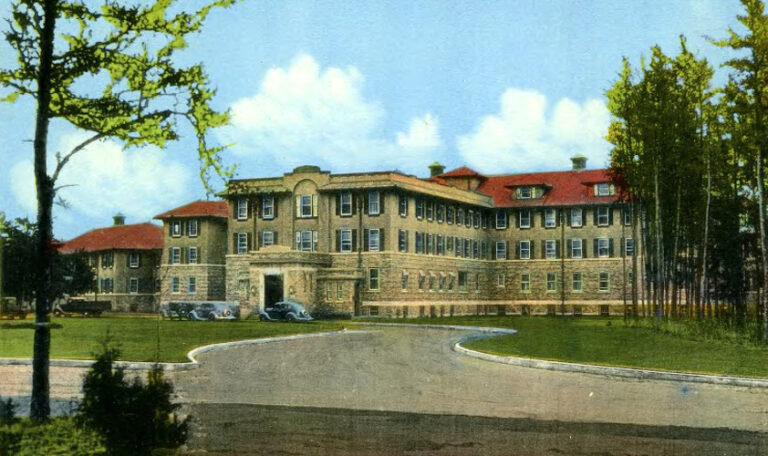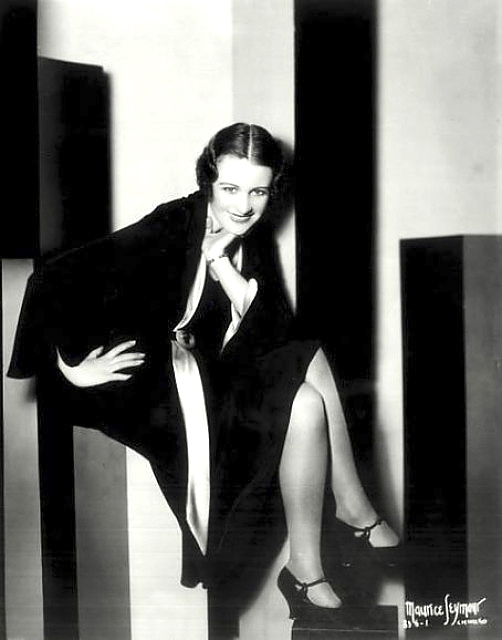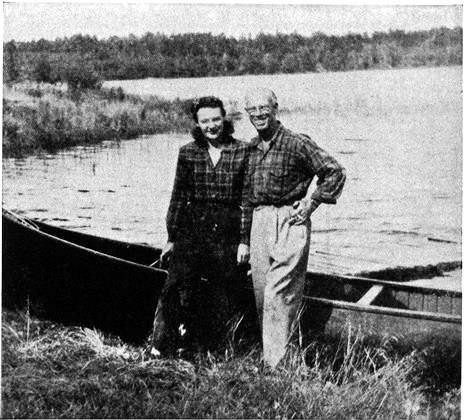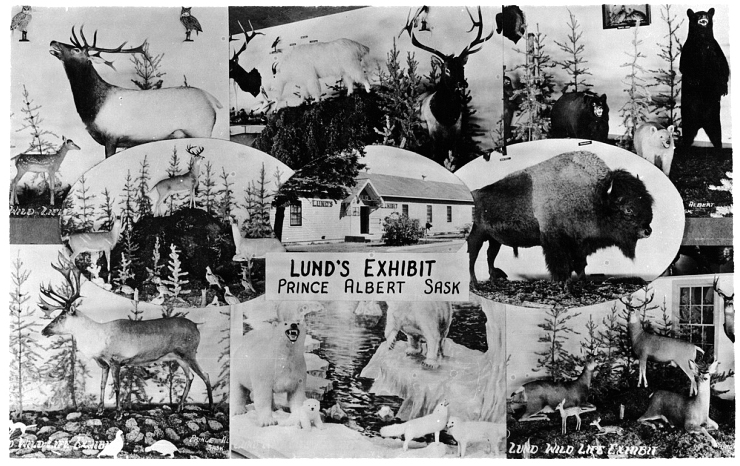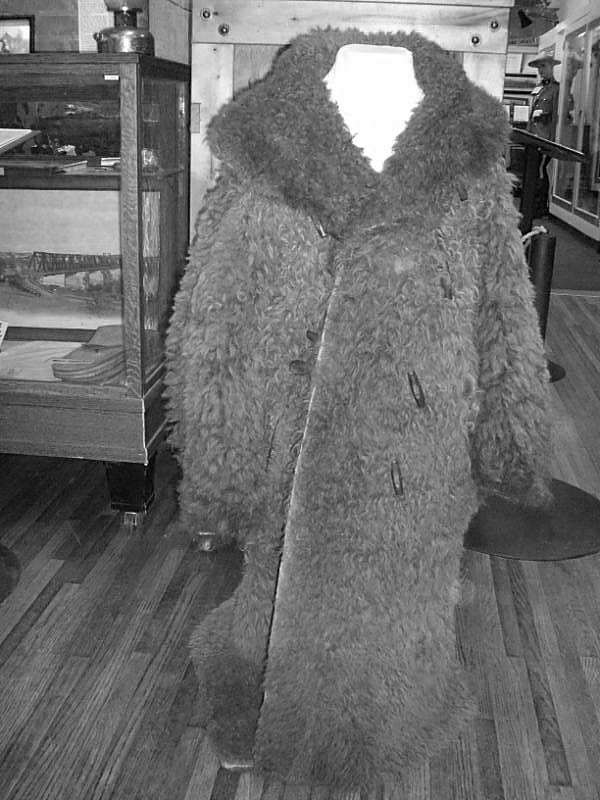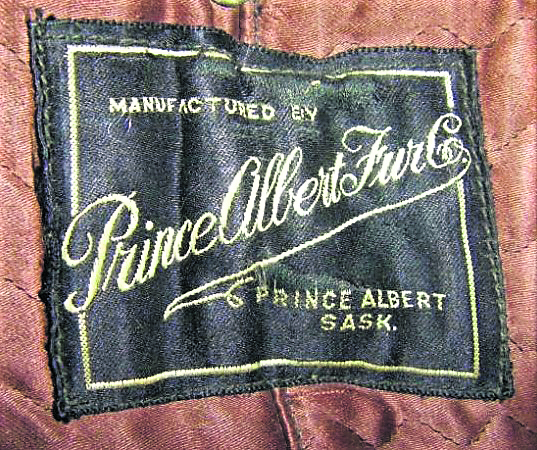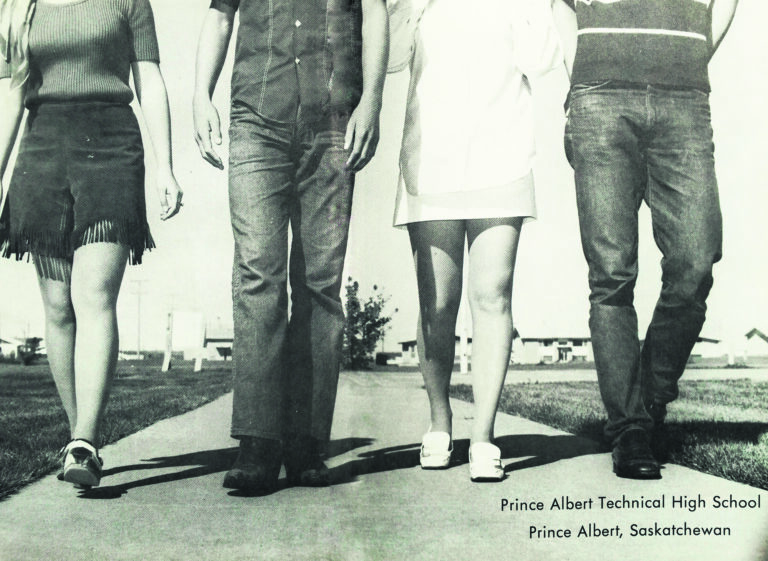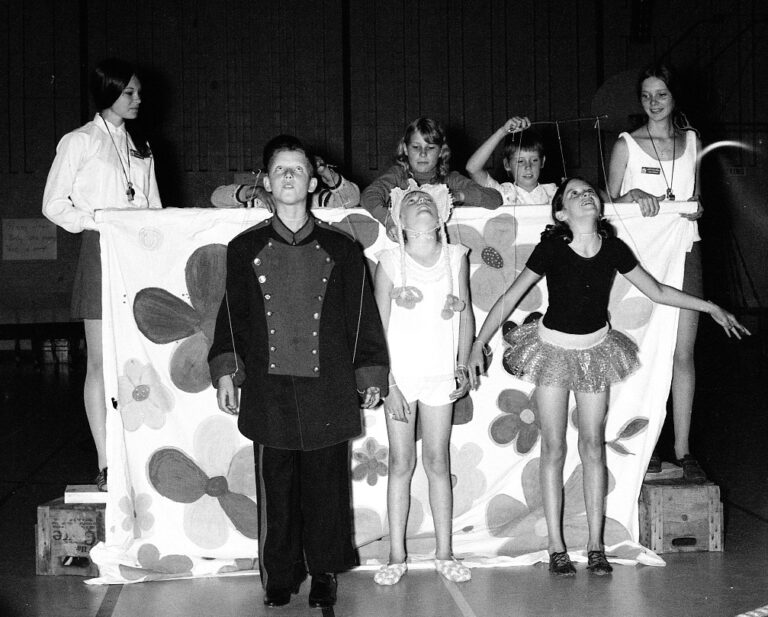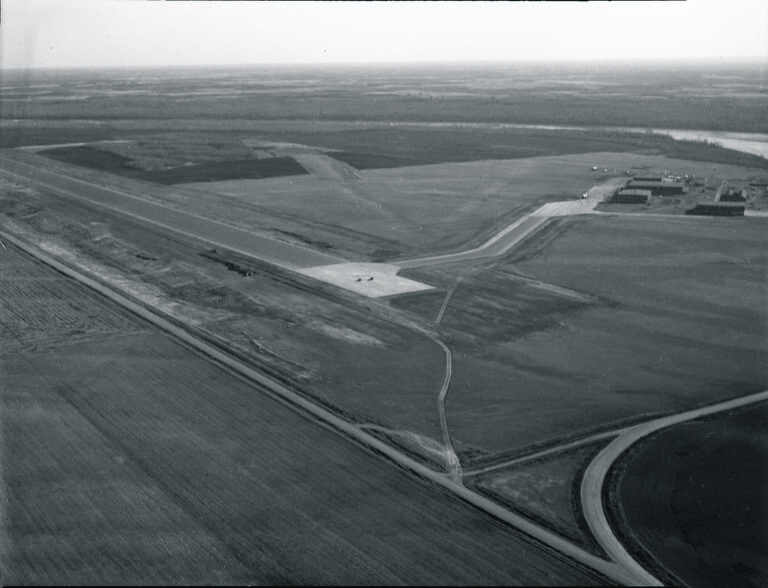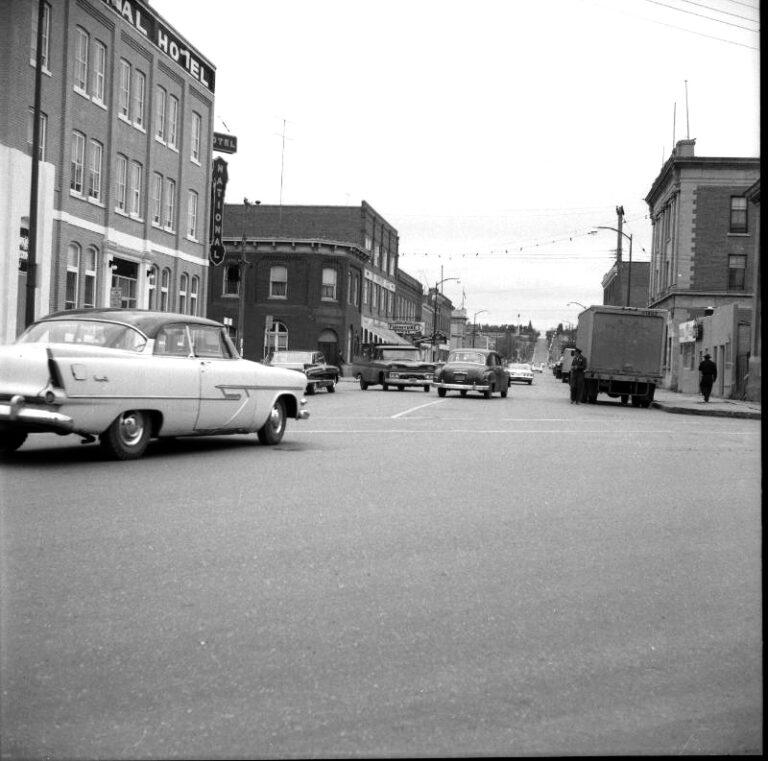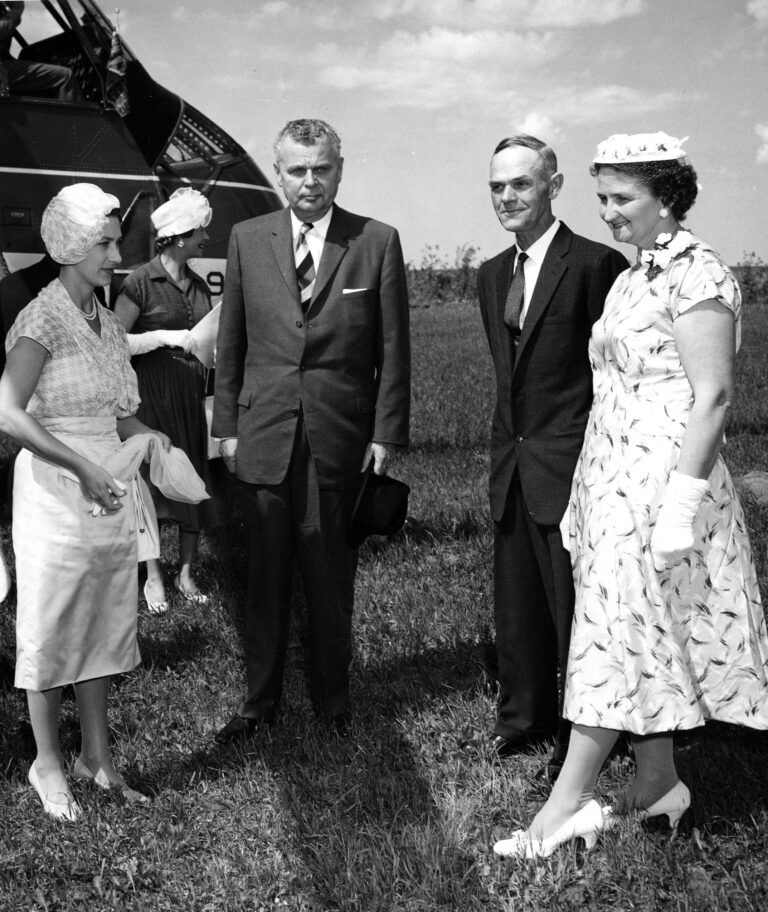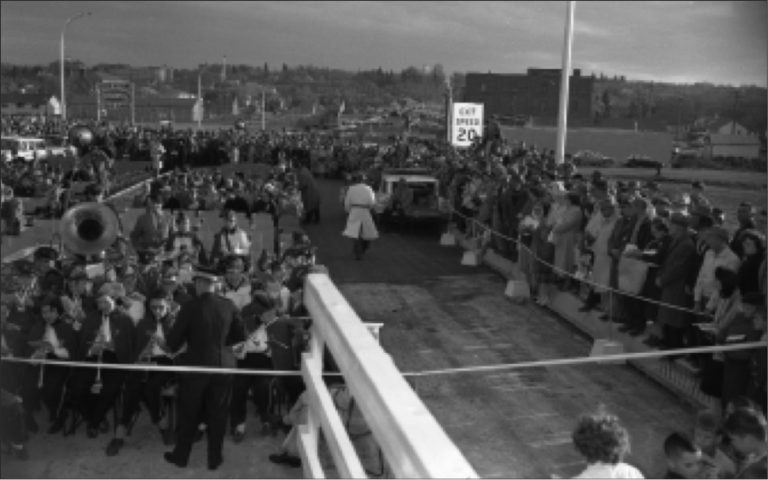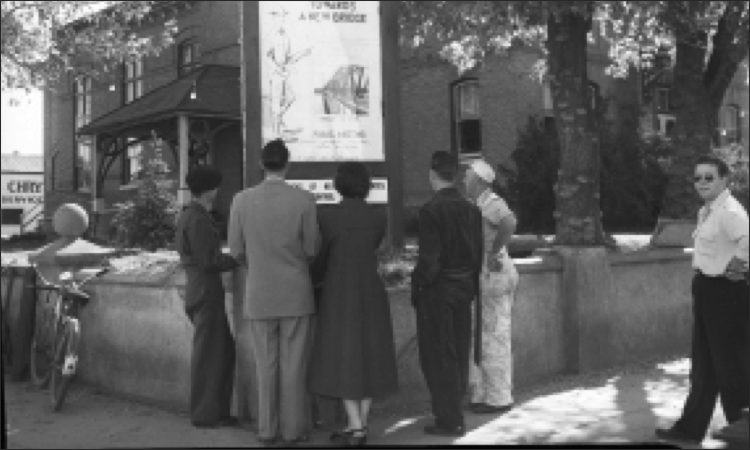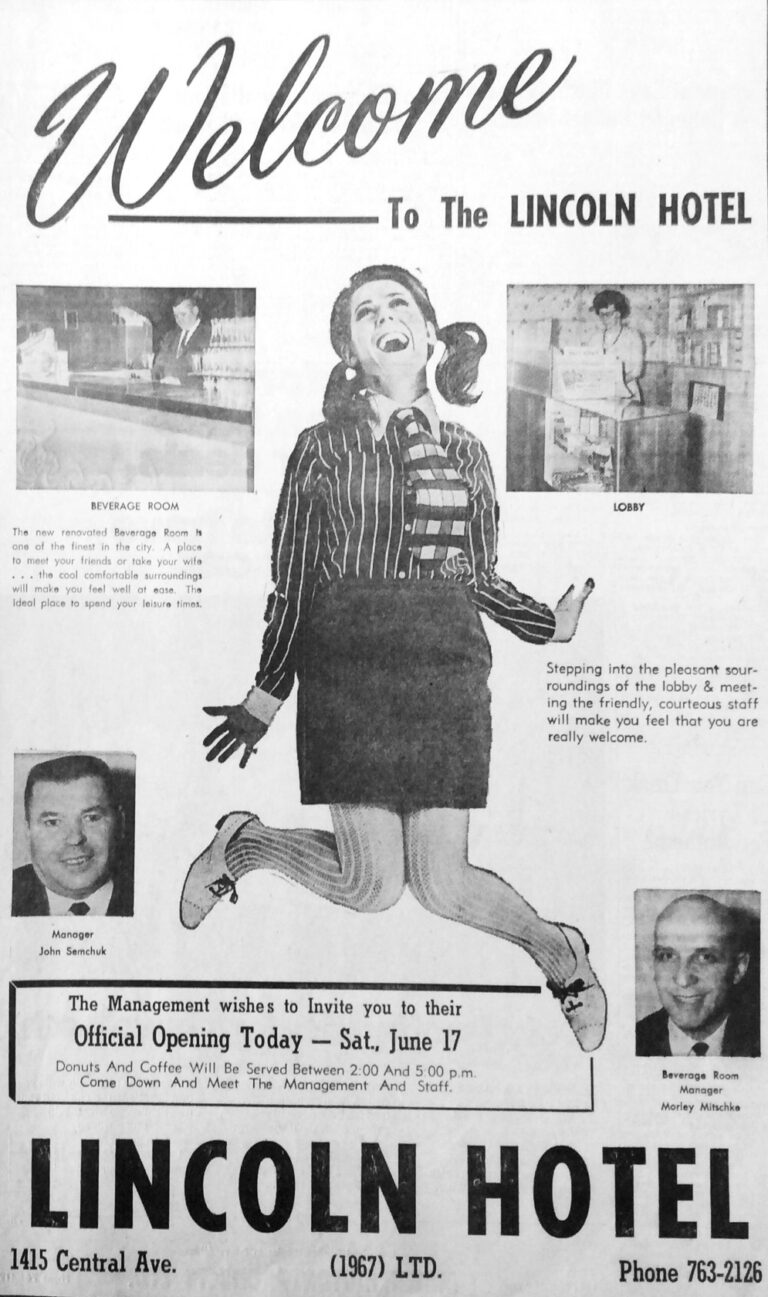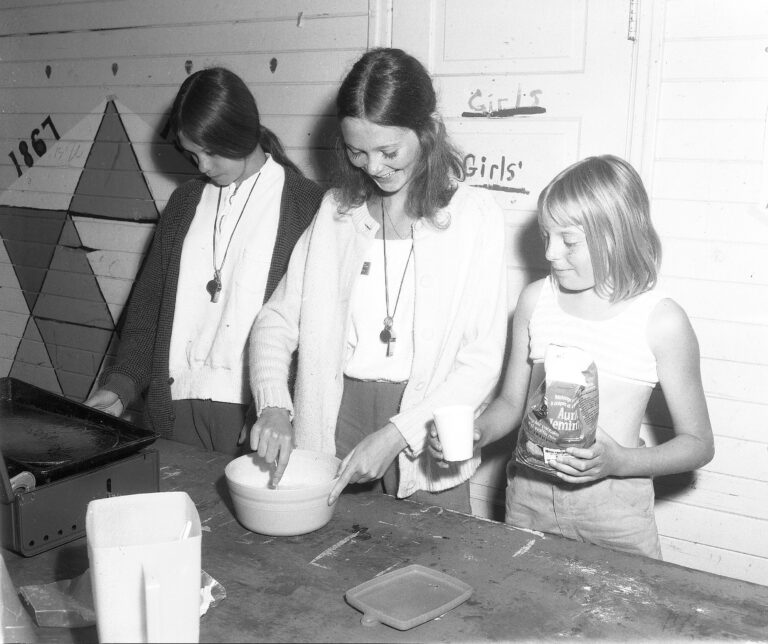by Joan Champ
When Gordon and I moved to Prince Albert, we attended several events at the Art Hauser Centre, including Raiders games. We were both impressed by the large copper statue of Johnny Bower in the main lobby. This statue was unveiled when Bower came to Prince Albert to be made an honourary citizen in November of 2007.
The pride of Prince Albert and one of the greatest goalies in hockey history, Johnny Bower, passed away at the age of 93 on December 26, 2017. Born into a family of Ukrainian heritage in Prince Albert on November 8, 1924, John Kiszkan was the only boy of nine children. When he started playing professional hockey, Johnny changed his last name to Bower, saying he changed it so the sportscasters would pronounce it correctly.
In the many interviews that Bower gave over the years, he always talked about playing hockey on Prince Albert’s outdoor rinks and ponds when he was a boy. “That’s where I learned my hockey really, when it was around 35, 40, 45 below zero,” Bower recalled. “Forty-five below zero, yeah, we had ear muffs on, and oh we froze our feet, we froze our ears, we froze our toes, we froze everything you can think of, but we still played there on the ice.”
Many kids back then didn’t have hockey equipment because, like some kids today, they couldn’t afford it. Legend has it that Bower’s dad went across the river and found a tree that was shaped like a hockey stick and shaved it down for him. Bower used that hand-carved stick in his position as goaltender. “I could hardly lift it, honest to God was it heavy,” Bower said. “And I used it for quite a bit, and it helped me to keep my stick down on the ice. And that’s how it all started.” Soon, he was playing in goal for the Prince Albert Black Hawks of the Saskatchewan Junior Hockey League.
In 1940, when he was 15 years old, Bower lied about his age to enlist in the army. He was sent to a training camp in British Columbia and was eventually sent overseas. He was discharged in 1944 due to rheumatoid arthritis, and returned to Prince Albert where he resumed his Junior hockey career with the Black Hawks.
Bower’s first game back in the PA net was against a Saskatoon team that included a young guy named Gordie Howe. Bower’s team lost badly to the boys from Saskatoon, but something good happened. At that game, Bower was seen by a scout for the New York Rangers who asked him if he’d like to try out for the American Hockey League (AHL). Bower asked his father, who let him go even though he thought hockey was too rough of a game. When Bower returned home to Prince Albert after his first AHL season, his father took one look at all the scars on Bower’s face and asked, “Don’t you know how to duck?” Bower played without fear – and without a mask.
Johnny Bower played 25 professional seasons, 12 of them for Toronto Maple Leafs. He was 36 years old when he started as a goalie for the Leafs in 1958-59, but despite his age, Bower’s great skills helped the Leafs to win four Stanley Cups during the 1960s.
On November 14, 2007, Bower attended a Raiders game – his first public appearance in PA in over 30 years. That night, the lobby of the Art Hauser Centre was named for Johnny Bower, complete with that spectacular statue of Bower in full goalie stance. The following evening, Johnny Bower was made an honorary citizen of Prince Albert.
Response to the British Home Children at St. Patrick’s Orphanage
Bruce Heffernan contacted me after reading my column about the British Home Children at Patrick’s Orphanage (December 12, 2017). He was somewhat surprised to see his father’s name, John Joseph Heffernan, in the article. He said that some of the points I made about his father and uncle are factually incorrect. I asked him to send me the correct version, which he kindly did. Here it is, in Bruce’s own words:
Further to the Heffernan brothers of St. Patrick’s Orphanage in Prince Albert. For the purposes of this e-mail I will refer to them as they were known as Jack and Bill. They were twin brothers born on October 11, 1891. Arrived at Orphanage in 1903 and left a few years later to find work.
Bill moved to Winnipeg, married and raised his family until his death. Jack found work at the Mossom Boyd ranch south of Prince Albert in the Clouston district. He enlisted in the Canadian army and was wounded on Vimy Ridge. After some time in hospital, his right leg was amputated above the knee. He returned to Prince Albert (to my knowledge at no time did either brother consider returning to England). After his return from the army Jack found office employment with the Saskatchewan Provincial Police. He married and raised a family of 6 along the way, farming and operating a store and post office in Clouston, retiring to PA in 1949. Bill passed away in Winnipeg on November 17, 1952. Jack passed away 10 days later on November 27, 1952 at the age of 61 and is buried at the Soldiers plot of South Hills Cemetery in Prince Albert.
joanchamp@shaw.ca

